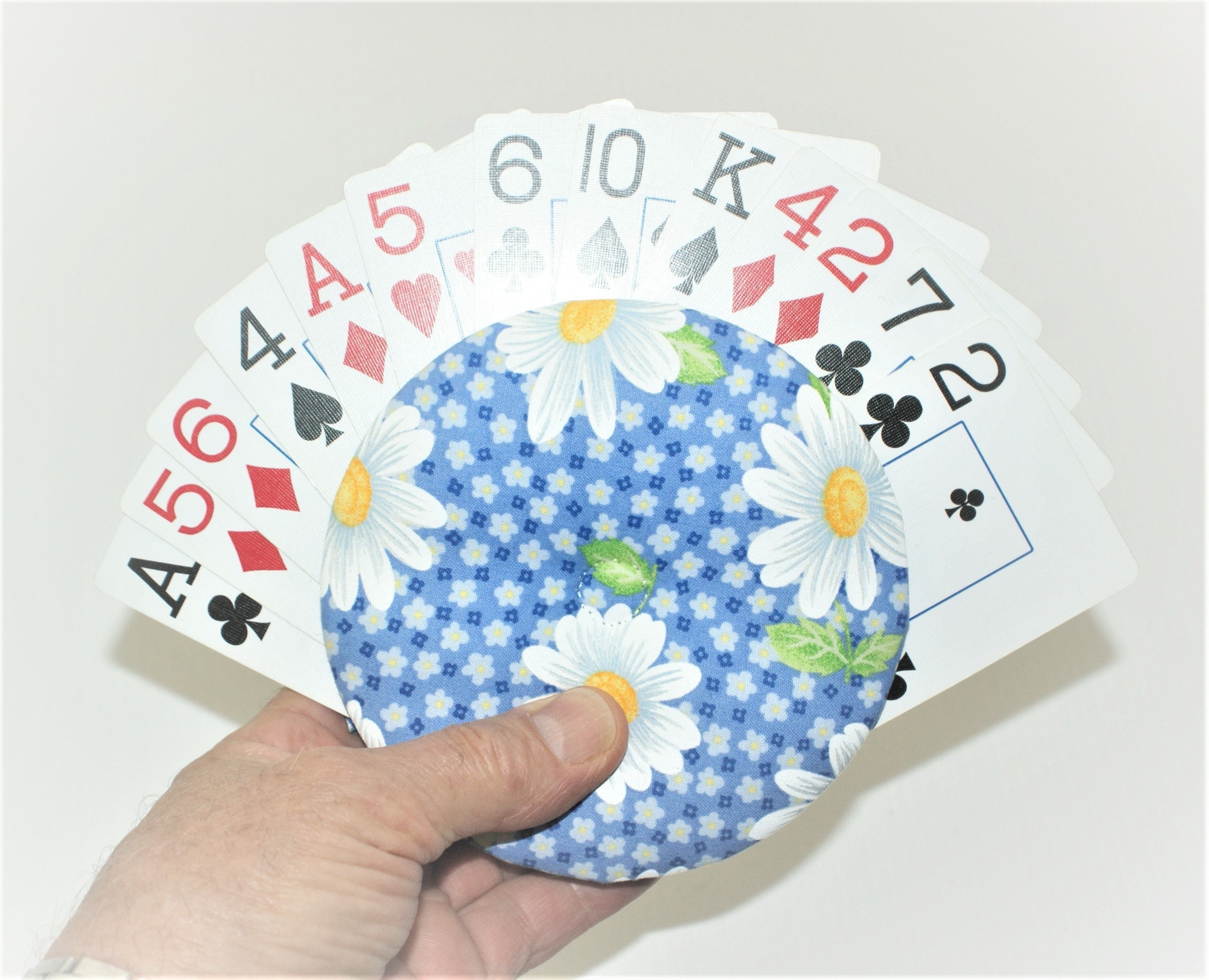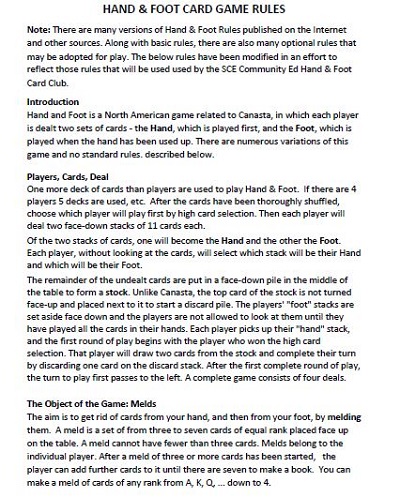
Hint: A player may want to freeze the deck if he or she desires to discard certain cards that the opposing team may have already melded. If the deck is intentionally frozen, the freezing discard must be placed on top of the discard pile, sideways. The discard pile can only be picked up after a natural card is discarded on top of the freezing card. The player who's turn immediately follows the freezing of the discard pile cannot pick up the discard pile.

This happens if the opposing team, or player, uses a wild card as his or her discard. The discard pile can be frozen against a team, or other players, during play. The player who picked up the discard pile may place additional melds down on the table during the remainder of his or her turn, if so desired. After the meld is played, the player adds the remaining discard pile to his or her hand, and the deck becomes unfrozen toward the player (and his or her team, if applicable). The created meld must consist of at least three natural cards (two (or more) cards from the player’s hand, and the one card from the top of the discard pile). The player must then combine his or her held, matching, cards with the top card of the discard pile, and put the newly created meld down on the table.

In order for a player to pick up a frozen discard pile during his or her turn, the player must have two matching natural cards in his or her hand (not on the table). Important: At the start of every round, the discard pile is frozen against all teams, or players. If a player wants to pick up the discard pile, knowing if the discard pile is frozen, or unfrozen (both situations are explained directly below), is very important. However, if the player has the right prerequisites, he or she may pick up the entire discard pile and add it to his or her hand. If playing on teams, only one player from the team must open, and all future melds made by the players on his or her respective teams will be placed in front of the teammate that initially opened.Īs stated previously, at the start of each player’s turn, the player always has the option of drawing a card from the top of the stock. Once a player (or the player's team), is open, on following turns he or she may add to, or play new melds, without restrictions. If the player’s or team’s, total game score ranges from 3000-4999, the required points to open is 120. If the player’s or team’s, total game score ranges from 1500-2999, the required points to open is 90. If the player’s, or team’s, total game score ranges from 0-1499, the required points to open is 50. In order to be allowed to open, the played card's points must amount to a certain total point value (defined below) on the table in front of them. In order to open, a player (during his or her turn) must place a meld, or melds, in front of him or her. In order for a player to be able to place any meld or canasta on the table during his or her turn (after a card is picked up, and before a card is discarded), the player, or team, must be Open. Each red 3 has a bonus value of 100 points, but if one team, or player, plays all four red 3s, each card counts as 200 points, or 800 points in all.


If a player finds a red 3 (3 of diamonds or hearts) in his or her hand at any point during the game, the player must place the red 3 face up in front of them on the table, and draw a replacement card from the stock. If the initial upcard is a Joker, 2, or 3, one or more additional cards must be turned upon the previously flipped card until a natural card (4 or higher) appears. The top card is flipped over, and placed next to the stock, starting the discard pile. The undealt remainder of the deck is placed face down in the center of the table, creating a pile named the stock. The cards that are held by an individual player are called that player’s hand. Note: When a new round is started, the player who dealt the cards in the previous round assumes the role of shuffler.Įach player picks up and looks at the cards that are dealt to him or her, making sure to keep the cards hidden from opposing players. After, the player who sits to the shuffler’s left deals 11 cards to each player, face down. If the game is being played with two or three players, no teams are formed, and each player is on his or her own. Teammates will sit across from one another. If playing with four players, two teams must be chosen, with each consisting of two players.


 0 kommentar(er)
0 kommentar(er)
